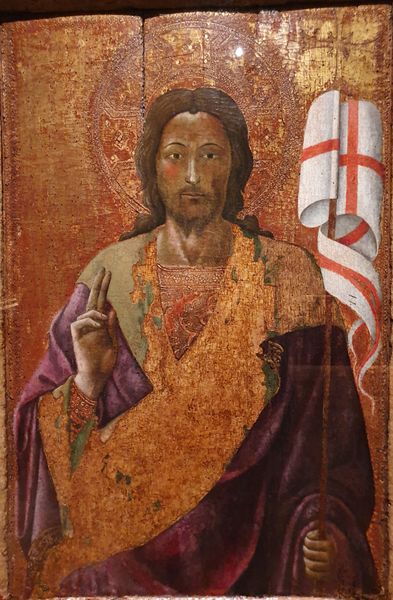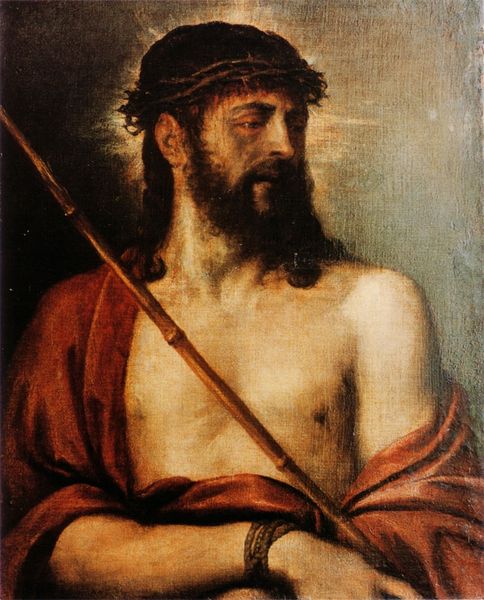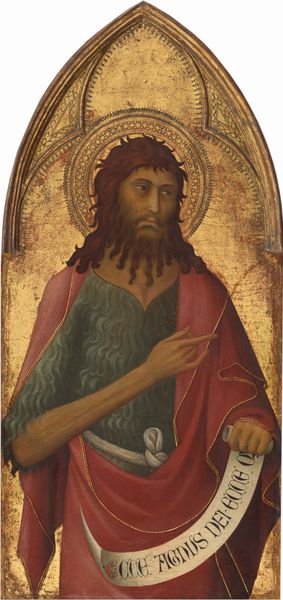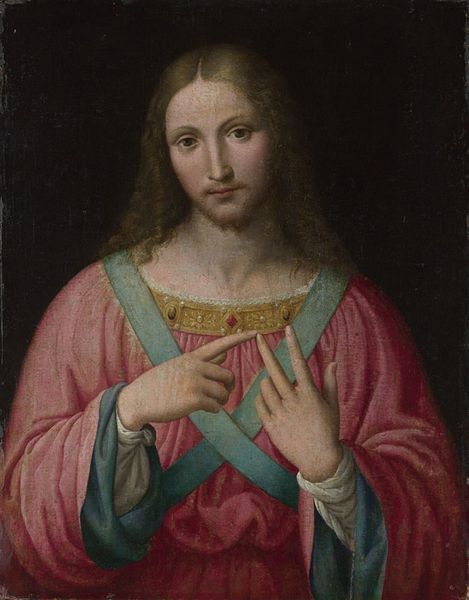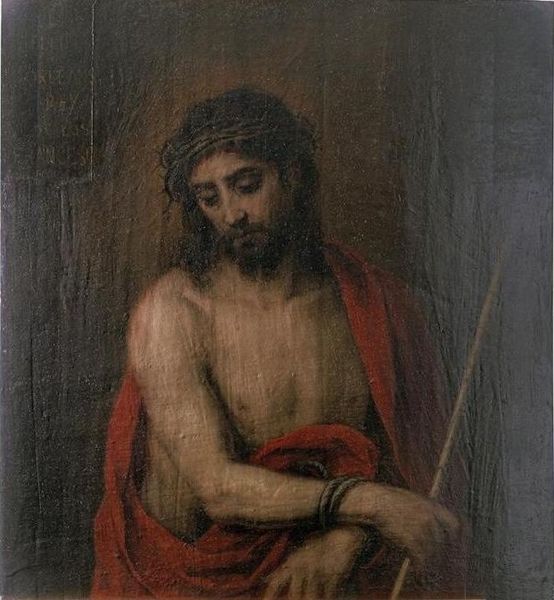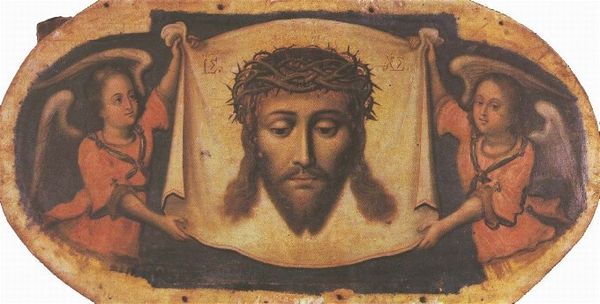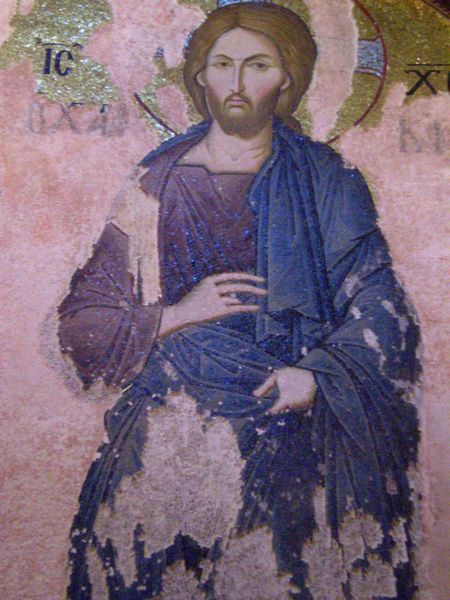
oil-paint
#
portrait
#
oil-paint
#
figuration
#
oil painting
#
christianity
#
italian-renaissance
#
christ
Copyright: Public domain
Curator: This is "Christ," an oil painting attributed to Antonello da Messina, found at the Santuario dell'Annunziata in Ficarra, Italy. The precise dating of this work remains a subject of art historical discussion. Editor: It's captivating. I am immediately drawn to Christ's expression; he has an intense, almost melancholic gaze that seems to penetrate the viewer. And that slightly raised hand, as though blessing or perhaps admonishing? Curator: The iconography is fascinating. Notice the orb, often associated with representations of Christ as Salvator Mundi, Savior of the World. It signified dominion and universal power, a theme prevalent in Christian art aimed at bolstering institutional authority. Editor: Yes, and consider the implications of such a symbol within the socio-political contexts of the time. While outwardly portraying religious piety, paintings such as this reaffirmed hierarchical structures and cultural hegemony by presenting power as divinely ordained. That blessing is more like a king’s seal. Curator: Indeed. Messina’s mastery, clearly visible here, elevated the genre through detailed realism and naturalism, distinguishing his contribution during the Italian Renaissance. It also provided artists and patrons a vehicle to showcase both religious devotion and status. The fine oil work highlights the luminosity. Editor: I'm thinking about that "realistic" style— who does that realism truly serve? By rendering the image of Christ so palatable to the sensibilities of the ruling classes, Messina perpetuated the existing social order and power relations through his brush. And what's up with his look? Very European. Where is the visual diversity of first century Palestine in this universalized depiction of power? Curator: Your points invite crucial, contemporary discussions, of course. Nevertheless, Messina's skillful oil painting approach should be understood within the artistic and patron-based conditions prevalent in 15th century Europe. Such considerations, as well as careful evaluation of restoration histories, provide greater insight regarding current appearance and symbolic value. Editor: Historical approaches must integrate power analyses that show what and who they’re excluding from visual and interpretive representation. So how do we take that Renaissance form, and invite new interrogations that re-politicize Messina’s vision? Curator: Perhaps acknowledging those silences as you mentioned is a worthy beginning in recognizing art's crucial and ever evolving dialogues within society. Editor: A beginning perhaps, but one needing persistent, unflinching questioning of that very aesthetic and what purpose its beauty actually serves.
Comments
No comments
Be the first to comment and join the conversation on the ultimate creative platform.





